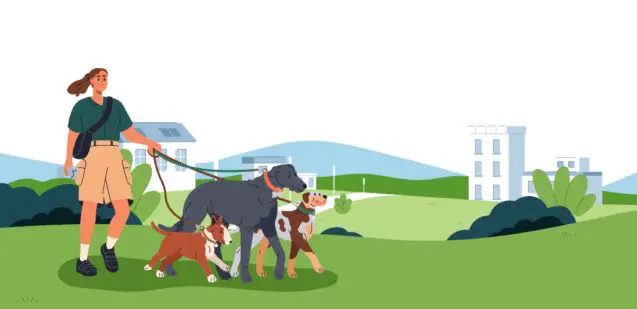Categories

Colder weather can create many challenges for our vehicles, from difficulty starting and corrosive elements on the roads to hazardous driving conditions. Here are some basic ways you can get your car ready for the winter, keep your family safe, and reduce the effects of snow, sleet, and ice on your car.
Start by getting your car serviced
Even if you aren’t the kind who gets a regular tune-up or servicing, it’s a good idea to do so before winter months settle in. Car parts don’t look at the calendar before going bad and failing; they can do so any time of year. But when they stop doing their job on a bitter cold day, you can wind up stranded and freezing while you wait for help. So get your car’s hoses, spark plugs, fluids, and other essentials checked out.
Change your oil — and top off all fluids
Hopefully, you are already changing your oil every 3000-5000 miles (there are different schools of thought about this). During cold weather, it is important to have good, clean oil to keep your engine lubricated. Oil can thicken in colder temperatures and become less effective. For this reason, your mechanic may rightly recommend an oil with a thinner viscosity for the winter months. You can check your owner’s manual for the proper viscosity for your vehicle.
Similarly, it’s even more important to have the correct antifreeze-to-water mixture during the winter months in order to prevent fluid from freezing in your radiator. Consult your owner’s manual to determine the correct mixture for your vehicle and have your coolant tested during your regular tune-up or pick up a tester at the auto parts store and test it yourself. Be sure the fluid is filled up to the maximum line.
Check your battery
No one wants to get stranded due to a dead battery, and getting stranded in uncomfortable cold temperatures is even worse. Go into winter with a battery that you can trust. If it is more than three years old, consider having it tested at an automotive store and replacing it if it is on the decline. Ask your auto care provider if your battery is strong enough for winter weather — cars can be harder to get started in cold temps and sometimes need a stronger battery.
Make sure tires are ready for slippery, icy roads
The majority of our members live in South Carolina — hardly the arctic tundra. And yet, particularly in the Upstate, you can regularly find yourself navigating snow-covered or icy roads. If your tires are not in good shape, you will be in greater danger. Fall is a great time to make sure the tread on your tires is sufficient. You can trust Honest Abe to let you know if it is time for new tires. Simply stick a penny in the tread of each tire. If you can see all of Abraham Lincoln’s head, get to a tire store ASAP.
You also want to keep a close eye on your tire pressure during the winter months. Tire pressure naturally fluctuates as temperatures rise and fall, increasing with hotter temps, and dropping when the thermometer drops. Your car likely has a tire pressure warning indicator light that will come on to alert you of a pressure drop, but you should regularly check it yourself with a tire pressure gauge or have it checked at a local gas station or automotive store. Tires with low air pressure have reduced traction, making them more dangerous on icy, slick roads. Tires with good air pressure are safer and save you money at the gas pump, as they improve gas mileage.
The need might be unlikely or rare in SC, but if you live in the Blue Ridge Mountains or are taking a ski trip to a mountainous area, consider snow tires or snow chains to protect you on the road.
Check your wiper blades
If your wiper blades are frayed and worn out, they won’t be up to the task of keeping your windshield free of wintery muck and salt, which means reduced visibility for you. Wiper blades should be changed every year or so anyway, and before winter is a perfect time to equip your car with a new set. If you anticipate a lot of snow and icy precipitation, consider blades specifically for winter. While you’re at it, don’t forget to top off your wiper fluid (preferably choosing a formula with a lower freezing point). You’re gonna need it.
Keep an emergency kit in your trunk or backseat
It’s always a good idea to have a first aid kit and a few emergency supplies in your car at all times, but there are a few extras to include for the cold months. Some are self-evident; others you might not have thought of. In addition to the usual flashlight, extra wiper fluid, gallon of water, jumper cables, and flares, we urge you to have these things on hand:
- Additional warm clothing in case you’re stranded—in or out of the car. Especially handy are those convenient Hothands packets for warming hands and feet.
- Matches
- Extra coolant
- Non-perishable food items: granola bars, nuts, jerky, etc
- Ice scraper
- Bag of sand or cat litter and shovel for creating traction on slippery ice
Now that you know how to winterize your vehicle, prepare your own mind for careful winter driving. Allow extra time for your car to warm up in super cold temps. Likewise, build in extra travel time during inclement winter weather. Remember that it takes more stopping time on slippery roads, so slow down and brake with caution. But most importantly, when the roads get too nasty, don’t bother. Cancel those appointments, chuck that to-do list, and nestle up to a cozy fire with some hot cocoa.
In the market for a new car instead? Check out our Auto Loans.



